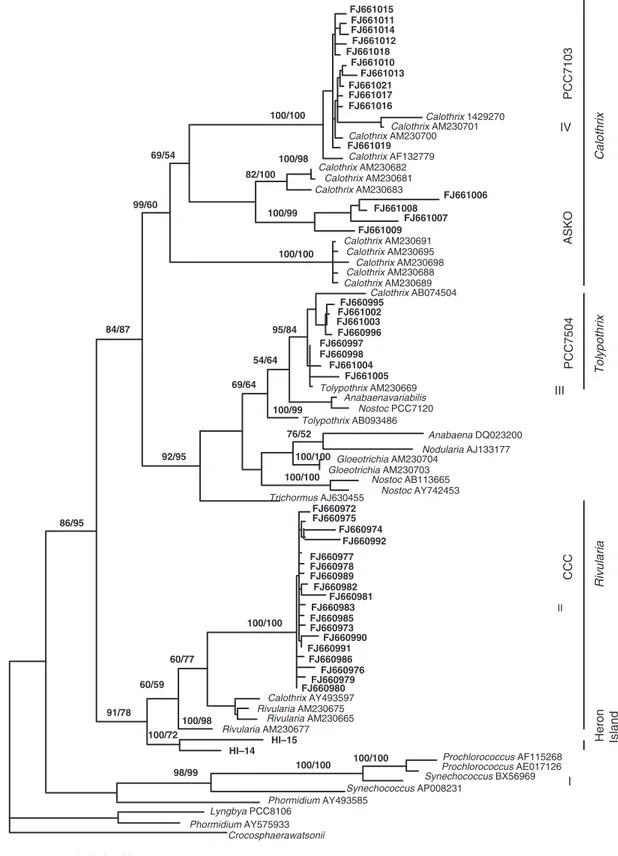Phylogenetic and molecular clock inferences of cyanobacterial strains within Rivulariaceae from distant environments
Texto completo
Figure




Documento similar
Differences between the measured and estimated free levels of some aldehydes during wine oxidation as a function of the molecular SO 2 level of the wine. The data from
Towards a census of hot, massive stars within the GC We are now in a position to construct, and interpret, a census of evolved massive stars in the GC from extant data, encompass-
We present a theoretical study of vibrationally resolved and unresolved molecular-frame photoelectron angular distributions (MFPADs) resulting from K-shell photoionization of N 2 ,
[9,10] with a large set of data from molecular dynamics simulations and experiments in 2D and 3D liquids and plasmas to determine the regime of applicability of hydrodynamics
To better understand the pathways underlying feeding-regulated LPS susceptibility in the presence and absence of BMAL1 and a functional molecular clock in hepatocytes, we
Apart from its findings in demographic and family history, the book's most notable conceptual achievement is its refinement within the Spanish context of the notion of "urban
Considering the three domains of the 23-Sn substrate and two equivalent molecular adsorption geometries within one substrate domain, a total of six orientations
Using the appropriate control signals, the relative phase of the input clock, CLKIN, and the output clock, CLK0, can be changed in steps of 1/256 of the clock period (see Fig.
